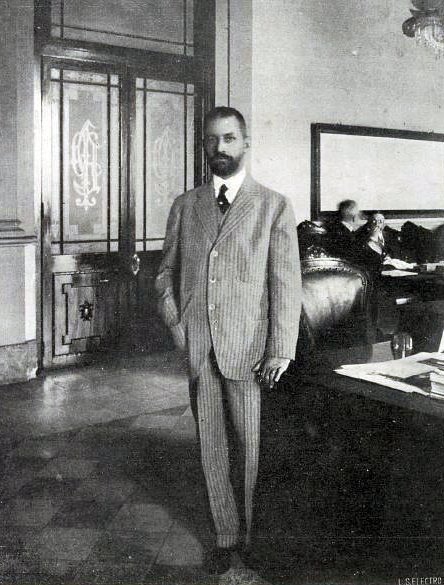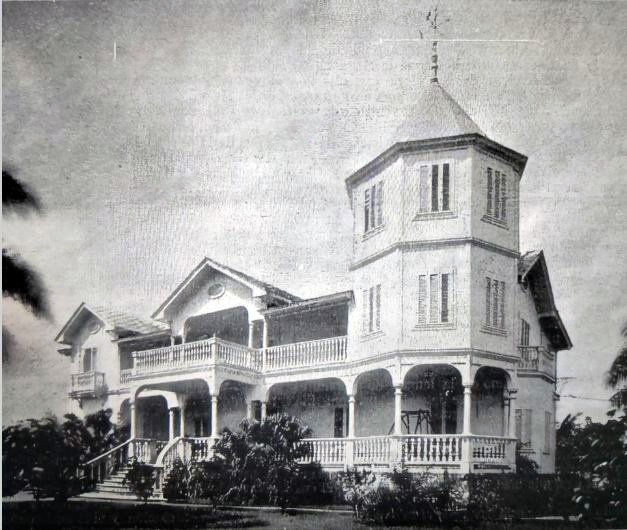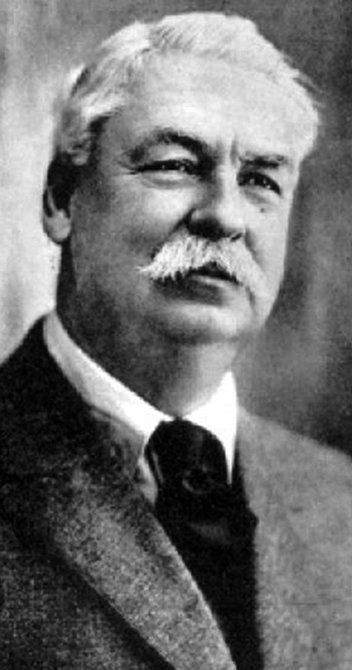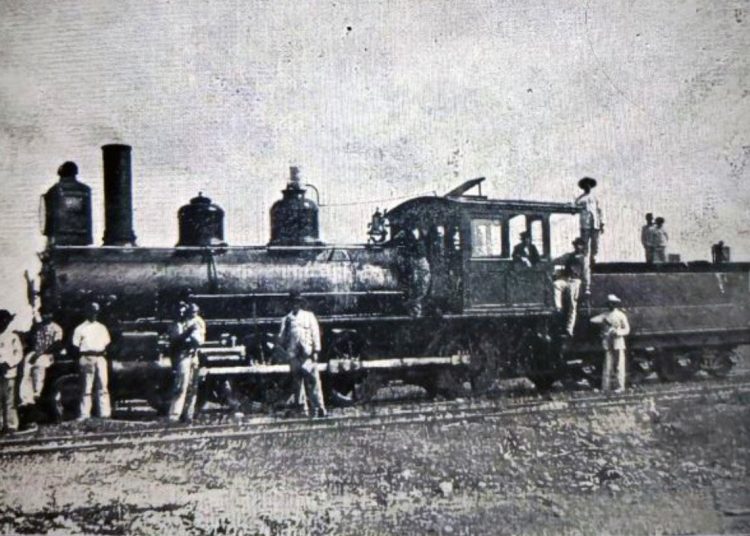U.S. Congressman Robert Bradley Hawley, a native of Memphis, was a friend of Colonel and influential politician Teodoro Roosevelt. He achieved fame for his performance as head of the Rough Riders regiment, which intervened in Eastern Cuba during the war against Spain in 1898. He took advantage of these relationships and also his ties with President McKinley to create the foundations of a sugar emporium on the island.
He had some experience in that economic activity because he owned a mill in the state of Louisiana; furthermore, being a stockbroker, he was well-connected to the business world. In 1899, Hawley founded the Cuban American Sugar Company. The company’s first investments were the purchase of land and the Tinguaro and Nueva Luisa sugar mills, in the province of Matanzas.
During his stay in Havana, he met Major General Mario García Menocal, an engineer who graduated from the United States and, a descendant of a family with tradition in the sugar industry. At that time he headed the Department of Lighthouses, in the Secretariat of Public Works; he previously stood out in the organization of the Havana Police Corps; in other words, he was very connected to the upper echelons of the military occupation government.

Menocal was one of the heroes of the last independence war, where he stood out in the attack on the city of Las Tunas and precisely in the nearby region, in Puerto Padre, he was going to materialize one of Robert Bradley Hawley’s great projects.

The Cuban general suggested he invest in the Chaparra neighborhood. It was a feasible business because, in addition to the fertile lands, there would be a port close to the industry to ship the sugar, a fact that would reduce export costs and the existence of a river would help satisfy the factory’s demand for water of the factory and the population. The calcareous soil would facilitate the drainage of waste.
Hawley, who recognized in the Cuban his ability to organize the company, “conferred upon him full powers to purchase land at the point that he believed best and in the necessary amount,” El libro de Cuba (1925) reported years later.
The General traveled to Puerto Padre and bought from the Catalan Antonio Mahique a small mill known as Chaparra, which had only done one harvest in 1895 since the following year it was destroyed by the insurgent troops.
The works
The Chaparra Sugar Co. was created in New Jersey on October 18, 1899, with a capital of $1 million, and “its founders and principal shareholders were Robert Bradley Hawley, president; Frederick H. Howell (1848-1929), vice president and James Howell Post (1859-1938), treasurer,” according to research by Álvaro J. Álvarez.
At the end of 1899, work began to build a modern sugar mill and clear land for crop fields. A group of former Liberation Army officers collaborated with Menocal, whom he incorporated as members of the company. The place was barely inhabited by 100 people. Searching for a workforce was a priority. Agents went to different parts of the country and also to Caribbean islands to hire workers. The press published advertisements. The day laborers were paid a peso of silver and food. They employed Caribbean, Central and South American, Chinese, and Spanish immigrants. There were also Germans. In her book, Lo que vi en Cuba, published in 1916, the Spanish journalist Eva Canel said:
“At the Chaparra pier, we left about fifteen or twenty Germans from the ships interned in Havana… I felt deep sadness for these boys, in a foreign land, without knowing the language, unable to help their country, moving away from their dear home, the ships in which they sailed, and having to earn their bread by performing tasks that are not their own.”
The coexistence of people of different origins, customs and educational backgrounds, in the midst of exhausting working conditions, caused several reprehensible acts. For example, an assault occurred at the Roque Hidalgo mixed store in 1903. The defense by gunfire from the clerks prevented the robbery. In that same year, a girl was raped and three Arab immigrants shot each other; two of them, Antonio Jasab and José Giguel, died in the brawl.
The American engineer Samuel Vickers was commissioned to design the plans for the mill and he also participated in the construction of the works. The industry had six steel warehouses, where the factory facilities were located.

The harvests
The milling began at the end of January 1902. About 80 settlers contributed cane for this harvest. Production was 128,739 bags of 325 pounds each. In 1909-10 it rose to 531,000 bags. To have a rough idea of the contribution of this colossus, in 1922 it reached the figure of 682,600 bags. A balance sheet carried out in 1923 reported that since its founding and until that date it had manufactured 8,342,146 bags of sugar, equivalent to 1,355,445 tons.
The magazine Cuba y América published a report on July 24, 1904, where it narrated details of the economic activity of the colossus:
“The mill and the town have electricity. The enormous amount of cane that the mill needs is brought daily by seven locomotives that work day and night with double staff and which move on sixty-two miles of railway, with a telephone network of one hundred and ten miles, which significantly facilitates the traffic.
“The port has a dock five hundred and four meters long and there the sugar is received by four large barges that store one thousand four hundred bags, from where they are taken to the steamers.”
By that date, according to the aforementioned magazine, the Chaparra mill had 450 caballerías (173.9 km²) planted, a number that continued to increase, since in 1913 it had 2,663 caballerías (1,029 km²).
The sugar mill town
Carlos Martí, Spanish journalist, publicist and traveler, visited that region in the 1910s and in his book El país de la riqueza described:
“In the extensive uncultivated savannahs and thick virgin forests that existed in Chaparra before 1900, a prosperous and flourishing population has arisen, which provides its extensive neighborhood with a way of living following the needs of modern civilized life. In the Chaparra sugar mill town, there are more than 600 houses, comfortable and modern, equipped with electricity, whose fluid is taken from the powerful plant that the Company has in Delicias. In all homes there is an abundant supply of drinking water, sufficient for all their needs, which is distributed thanks to an aqueduct that the Company has built, having pipes and showers installed in the houses to meet the needs and hygiene of its inhabitants, even the poorest.
“The town, both the one known as Pueblo Nuevo and the one called Pueblo Viejo, is illuminated by numerous electric lights, in addition to the service installed in each house. During the dry season, its streets and avenues are watered with powerful irrigation carts, equal to those used for that purpose by the Secretariat of Public Works in the city of Havana.”
The Spanish writer and journalist Eva Canel was also there during this expansion process. In her book Lo que vi en Cuba she related:
“The train made a long stop in Chaparra: there were many people of all kinds, races and colors on the platform: they all looked well and content…it is almost urbanized: it has very wide streets, families are grouped in them, there are modest homes and elegant chalets; there is a quite comfortable hotel where you can eat well with prices imposed by the company for its employees: a lot of people bustle, you see movement, men of all types, races and types…; well-dressed women, flirtatious young women wearing low-cut dresses as in Havana… it is town, village and factory, all in a heterogeneous group.”
The first neighbors “later added more than 5,000 in the town and about 25,000 within the limits of the property, with 200 miles (321.87 Kilometers) of railroad track. Then, in 1910, it had more than 10,000 day laborers and 200 settlers. Within the limits of the sugar mill there are great amenities for families: churches, hospitals, clubs, theaters, hotels, restaurants, cafes, beautiful parks, brilliant electric lighting,” says historian Gerardo Castellanos in the work Panorama histórico, published in the 1930s.
The Chaparra Hospital, directed by the doctor and Brigadier General of the Liberation Army Eugenio Molinet Amorós, had a central building and several pavilions. It provided general care services, cures, surgery, radiographic examinations using modern X-ray equipment, and analysis for chemical-biological research. The admission capacity was 90 patients. In 1923 it admitted 1,304 patients; of these, 347 cases were operated on, a statistic that I consulted in the extraordinary edition of the magazine Agricultura y Zootecnia, corresponding to 1924. The scope of the institution extended to nearby towns through itinerant consultations carried out by its doctors two or three times a week.

Private schools funded by the sugar company also operated. In 1923 the Chaparra Sugar Company estate included other properties in the Las Tunas region, it had 30 primary schools, 8 were private, 36 teachers and 2,000 students enrolled.
Famous were the open-air concerts on the beautiful Paseo del Prado, illuminated with streetlights of accomplished artistic design, where the local music band, every Sunday, delighted residents and visitors. The educational and recreational societies that Gerardo Castellanos mentions were named Club Chaparra and La Caridad and on Juan Claro Key they built the Club Náutico. By the way, this islet was joined to the mainland by an embankment. Menocal sailed there on his luxurious yacht Mariana. Another curious fact is that El Eco de Chaparra was published, a newspaper written by the young Colombian Alfonso Jaramillo.
Menocal, although he maintained his participation in the sugar company, left office when he assumed the presidency of the Republic in 1913. By that time, his multiple businesses had made him a millionaire.
The U.S. factory, in 1960, passed into the hands of the Cuban State as part of the nationalization process carried out by the revolutionary government and was named Jesús Menéndez. It continued to set standards among its peers, with several productive records. In its century of existence, it exceeded one hundred thousand metric tons of sugar 26 times. This was Chaparra, for a time the biggest sugar mill in the world.
________________________________________
Sources consulted:
Carlos Martí: El país de la riqueza, Editorial Renacimiento, Madrid, 1918.
Emilio Roig (editor): El libro de Cuba, Havana, 1925.
Gerardo Castellanos: Panorama histórico, desde 1492 hasta 1933, Ucar, García y Cía, Havana, 1934.
Gerardo Pardos (editor): Libro de oro hispano-americano, Sociedad Editorial Hispano Americana, Madrid, 1917.
Eva Canel: Lo que vi en Cuba, La Universal Printing and Stationery Store, Havana, 1916.
Revista Cuba y América
Revista Agricultura y Zootecnia
Diario de la Marina
Archive of Abel Julio Sastre Matos











Esta es la mejor lectura que e leído en años. Asombroso
Soy vecino del Central Delicias, y e quedado anonadado con esta lectura, lo repito.. la mejor lectura que e hecho en años.